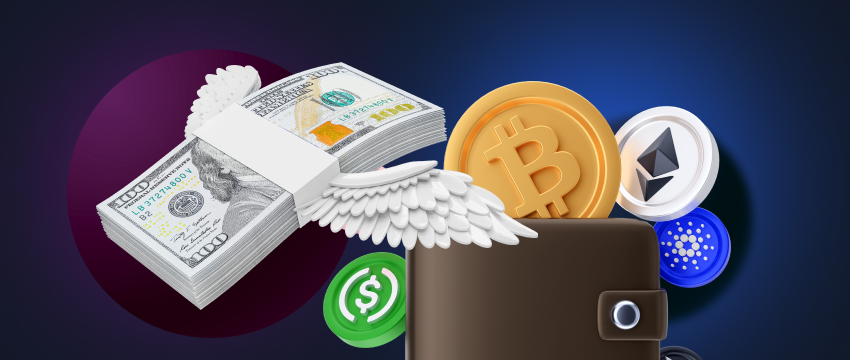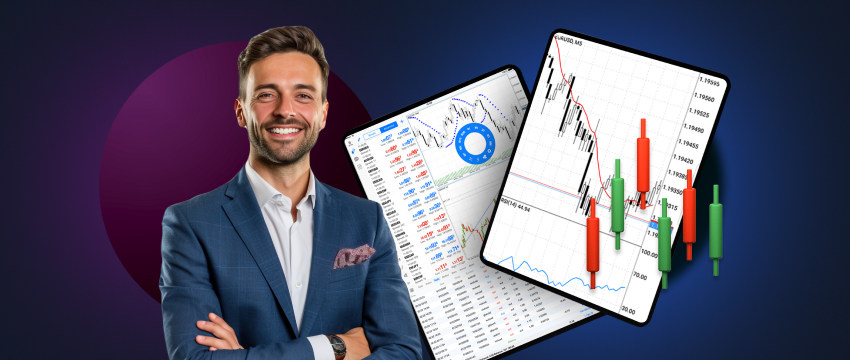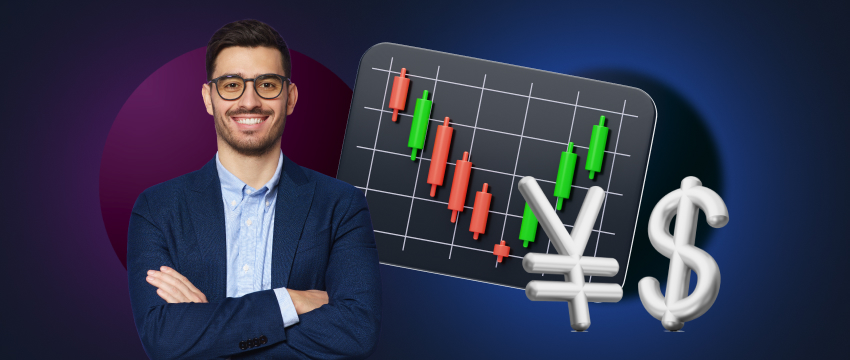While cash and cryptocurrencies can both act as a medium of exchange, they are otherwise significantly different from each other. In this article, we’ll first look at the ways in which cryptocurrencies and real money are defined. We’ll also examine some of the similarities shared by both, as well as the major differences between the two.
What are cryptocurrencies?
Cryptocurrencies are decentralised digital or virtual currencies managed by a distributed network called the blockchain. Cryptocurrency transactions require no 3rd party processing, removing the need for an intermediary such as a bank, financial institution or companies like PayPal and Venmo. Crypto transactions are secured using an encryption technique called cryptography. There are approximately 23k types of cryptocurrencies in circulation worldwide. Anyone has the ability to send or receive cryptocurrency as payment, provided they have internet (peer-to-peer system).

What is fiat money?
Fiat money is defined as inconvertible paper money made legal tender by government decree. It is a government issued currency like the USD, Euro, and other popular international currencies. It is not backed by a physical commodity like gold or silver. Instead, it’s value is maintained by the government. Central banks typically have control over how much money is printed, giving them significant control over a country’s economy.
Are cryptocurrencies and fiat money the same?
While cryptocurrencies share similarities with fiat money, the one is not the same as the other.
Control and supply
- Cryptocurrencies are decentralised by nature, meaning no one government or financial institute controls them. While many have an unlimited supply, cryptocurrencies like Bitcoin are limited to an eventual finite number.
- In contrast, the supply of fiat money is totally government controlled, and is backed by (given value) the government that issues it. Governments, via their central banks, dictate how much currency is issued. A consequence of too much fiat money printed is hyperinflation.
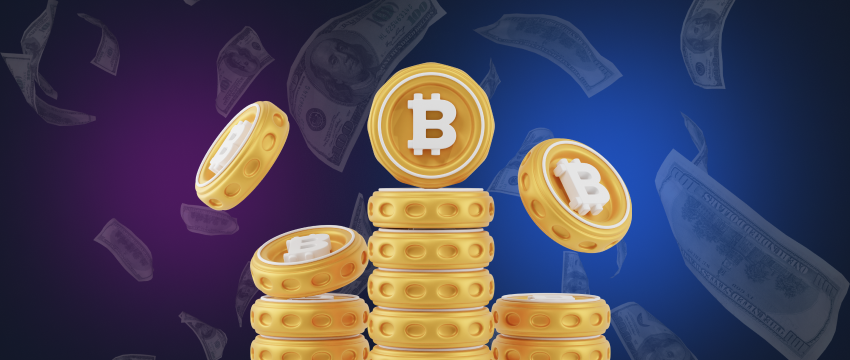
Transactions
- Fiat money is a physical, tangible currency and can be withdrawn as cash. Cryptocurrency is only available in digital form.
- Cryptocurrency transactions only require internet connectivity to be processed. Digital cash transactions however require a 3rd party intermediary like a bank or other financial institution to be effected.
Safety and Security
- Crypto transactions are regarded as being highly secure. This is because they are carried out on the blockchain, where they cannot be modified or deleted. Every transaction is recorded and verified, and they can also be seen by everyone. However, cryptocurrencies do carry scam risk and a crypto account is capable of being hacked, so vigilance is key.
- Printed cash is subject to counterfeiting, and digital cash transactions may be at risk of data hacks or other forms of online malicious security breaches.
Volatility
- Cryptocurrencies are renowned for being notoriously volatile and often considered high risk investments. They are also not typically protected by governments. They do however offer a means of diversifying one’s investment or trading portfolio. However, proper research and monitoring are important so as not to lose all your funds.
- Money supply is usually well monitored to avoid currency crashes. However, currency fluctuations do exist, as evidenced by the forex market where exchange rates between major currency pairs move up and down continuously. Currency movements are heavily influenced by factors like economic announcements, inflation, geopolitical uncertainties, war, environmental disasters, etc.
Other reasons why cryptocurrencies are so popular
- Cryptocurrencies typically incur little to no transaction fees due to the elimination of 3rd parties to process the payments.
- They are accessible by almost anyone, anywhere in the world, provided they have internet connection. This is enhanced by the ease at which opening a cryptowallet is, streamlining the transaction process significantly.
- The level of speed at which crypto transactions are handled is considerably faster than the 1-5 days it takes for conventional banking transactions to be processed.
- Cryptocurrency transactions are considered some of the safest due to security of funds which is made possible by proof of work, proof of stake, public and private keys, etc.
- Cryptocurrencies offer a level of privacy quite unseen with fiat money. Their decentralised nature means personal details don’t need to be disclosed and third party intervention (e.g., governmental or bank) has been removed. In addition, the crypto space also provides a level of transparency and openness in regards to transactions that largely minimises the possibility of corruption.
- Popular fiat currencies like the US Dollar or the Euro can be used to buy cryptocurrencies. Further, investors who trade in crypto and convert currencies using wallets or cryptocurrency exchanges, are subject to minimal transaction fees.
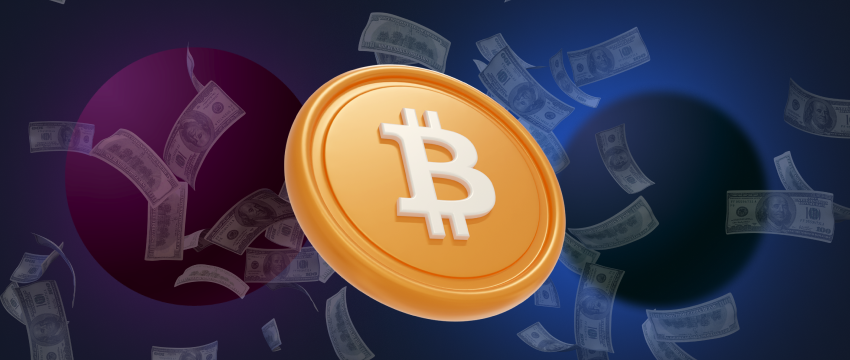
Cryptocurrency CFD trading
Crypto CFD trading may appeal to traders due to the high leverage it offers. Leverage is essentially the borrowing of funds from a CFD broker, allowing a trader to open a larger position than what their account balance would typically allow. A trader may opt for leverage in order to increase the opportunity for maximising returns. Leverage is however highly volatile and the risk of losing funds is considerable, even with crypto trading.
Starting your cryptocurrency trading journey
The steps to getting started with cryptocurrency CFD trading are relatively straightforward. However, the process does require in-depth research and doing your homework.
- Find a reputable cryptocurrency CFD broker. Research the broker by reading as many customer reviews as you can find. Take a read through their website to establish whether the information therein is simple to consume and clear enough to understand. Study their fee structures, account options and spreads offerings.
- Once you’ve identified a broker that you like, consider opening a demo trading account to test their trading platform. Further, use the opportunity to get a feel for their customer support (be this via email, telephone, or live chat). Once you’re absolutely certain that this is the broker for you, move to a live trading account.
- As you embark on the journey of executing trades, ensure you have a proper trading plan in place to safeguard your funds. A well-strategised trading plan is one that has proper risk management tools in place, and that helps you make better informed trading decisions.
In conclusion
The world of cryptocurrency trading is an exhilarating space to put your skills and expertise to the test. While highly volatile, it opens the door to different opportunities for making gains, provided you remain vigilant of unanticipated risks. As with any tradable financial instrument, cryptocurrency trading comes with its own drawbacks. Provided you are familiar with what it is you need to look out, and you have an optimized trading strategy in place to manage the complexities of trading in this space, this may help you protect yourself from unexpected losses.
Disclaimer: This material is for general informational & educational purposes only and should not be considered investment advice or an investment recommendation. T4Trade is not responsible for any data provided by third parties referenced or hyperlinked, in this communication.
